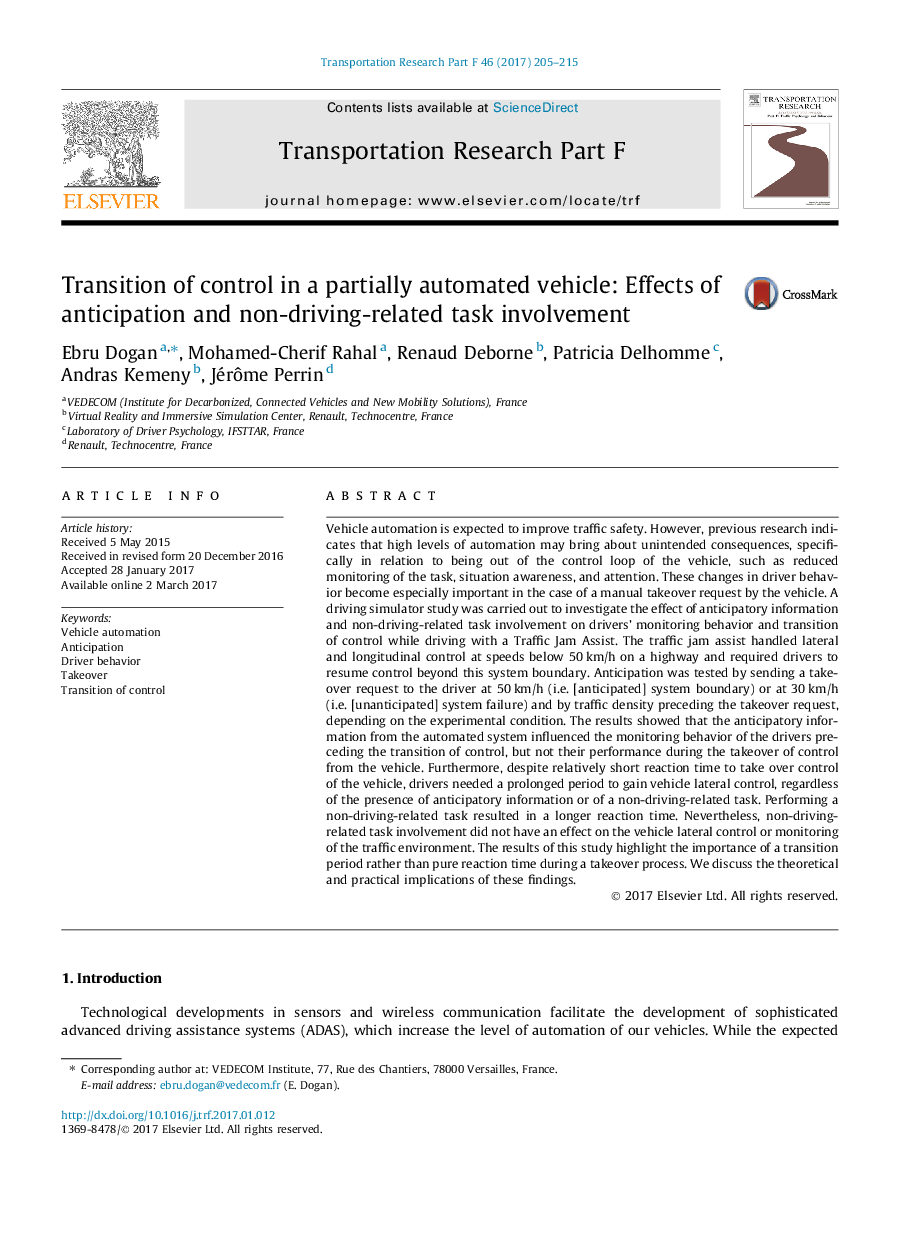| کد مقاله | کد نشریه | سال انتشار | مقاله انگلیسی | نسخه تمام متن |
|---|---|---|---|---|
| 5037441 | 1370222 | 2017 | 11 صفحه PDF | دانلود رایگان |
- Anticipatory cues and non-driving task (NDT) in an automated vehicle was studied.
- Anticipatory information about the system boundary improves driver monitoring.
- But it does not affect takeover time or vehicle control after manual takeover.
- NDT hinders takeover time, but does not affect vehicle control.
- Stabilization of vehicle control seems to be more important than mere takeover time.
Vehicle automation is expected to improve traffic safety. However, previous research indicates that high levels of automation may bring about unintended consequences, specifically in relation to being out of the control loop of the vehicle, such as reduced monitoring of the task, situation awareness, and attention. These changes in driver behavior become especially important in the case of a manual takeover request by the vehicle. A driving simulator study was carried out to investigate the effect of anticipatory information and non-driving-related task involvement on drivers' monitoring behavior and transition of control while driving with a Traffic Jam Assist. The traffic jam assist handled lateral and longitudinal control at speeds below 50Â km/h on a highway and required drivers to resume control beyond this system boundary. Anticipation was tested by sending a takeover request to the driver at 50Â km/h (i.e. [anticipated] system boundary) or at 30Â km/h (i.e. [unanticipated] system failure) and by traffic density preceding the takeover request, depending on the experimental condition. The results showed that the anticipatory information from the automated system influenced the monitoring behavior of the drivers preceding the transition of control, but not their performance during the takeover of control from the vehicle. Furthermore, despite relatively short reaction time to take over control of the vehicle, drivers needed a prolonged period to gain vehicle lateral control, regardless of the presence of anticipatory information or of a non-driving-related task. Performing a non-driving-related task resulted in a longer reaction time. Nevertheless, non-driving-related task involvement did not have an effect on the vehicle lateral control or monitoring of the traffic environment. The results of this study highlight the importance of a transition period rather than pure reaction time during a takeover process. We discuss the theoretical and practical implications of these findings.
Journal: Transportation Research Part F: Traffic Psychology and Behaviour - Volume 46, Part A, April 2017, Pages 205-215
